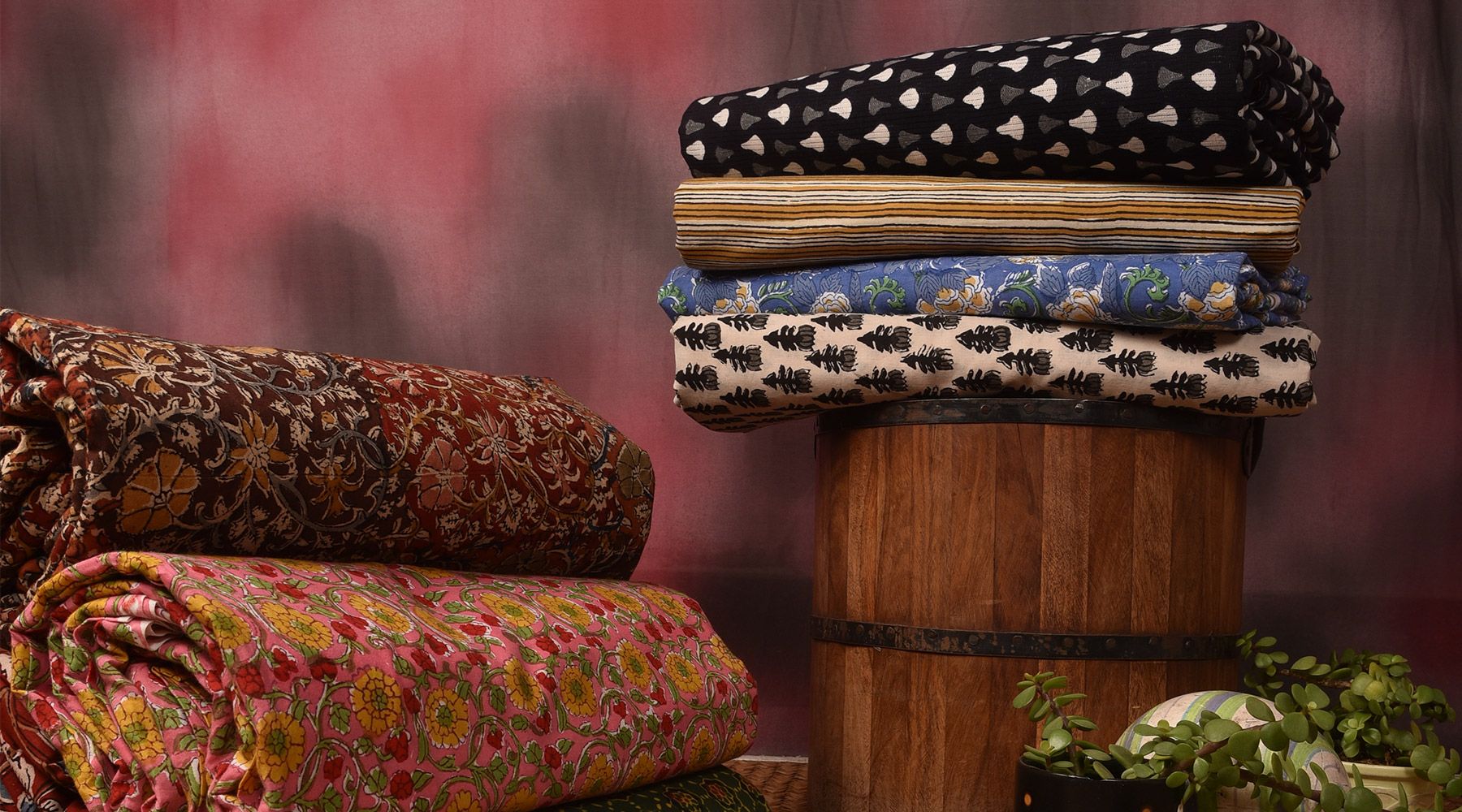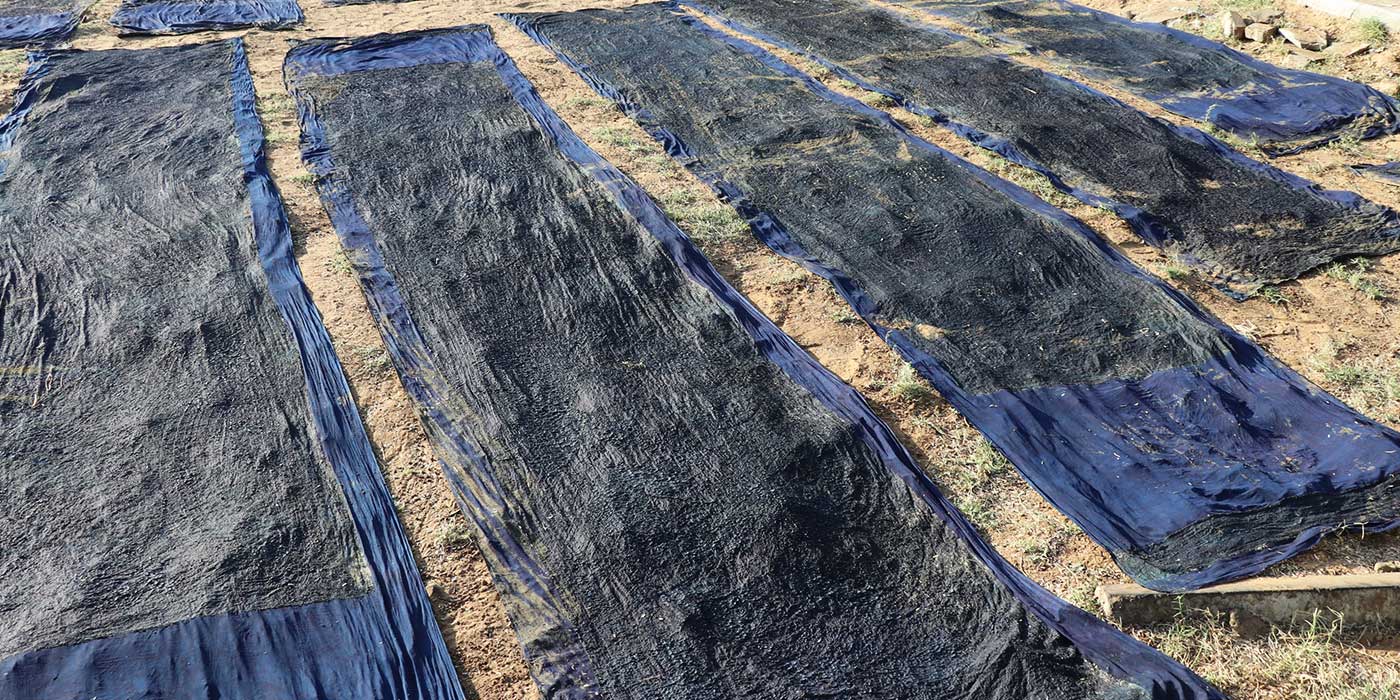Mud-resist hand-block printing (Dabu printing) practiced in Rajasthan and Gujrat of India since 16th century. It is natural substitute of batik print with wax. The process of making mud resist printed fabric is lengthy and hardworking process. To achieve different color with natural dyes, one has to follow different process. Production process for mud resist printing with indigo is as follows.
PROCESS NO. 1
Scouring / De-Sizing
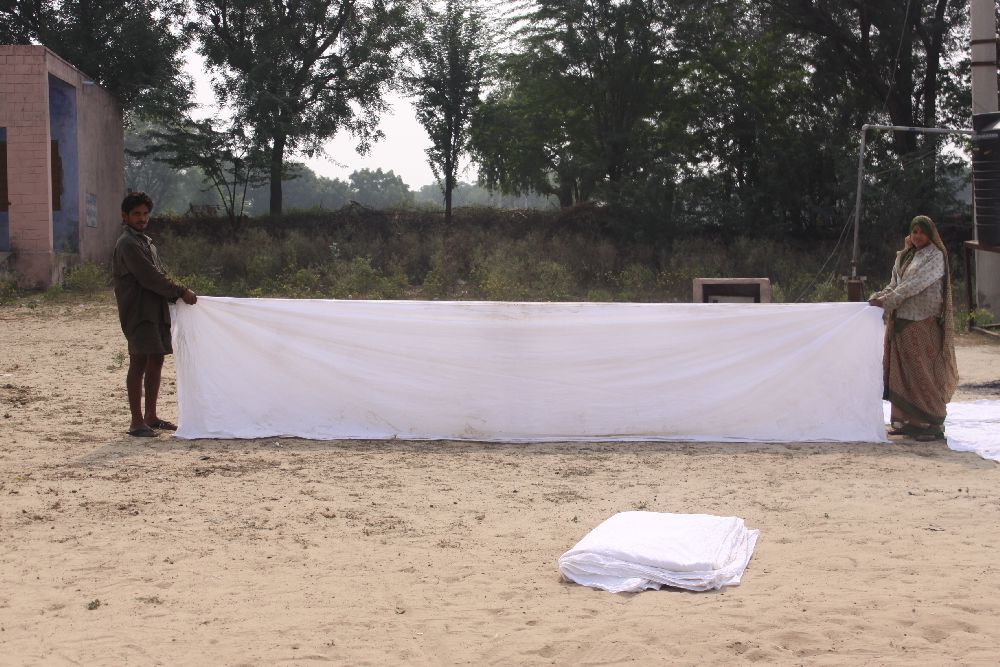
Traditional process for natural fiber base fabric – i.e. Cotton, jute, linen fiber base fabric.
-
Cut the grey fabric in pieces - maximum length preferred is 10 mtrs .( If fabric is heavy like canvas or jute , then need to reduce the length of fabric – so that one can handle the fabric easily)
-
Put the fabric in the cemented water tank for overnight. Then repeatedly beaten up the wet fabric against hard surface (normally stone or cemented floor). Then again dip in the water so that enzymatic reaction can loosen the starch. (Natural or chemical – called size). This process continues for 3 days. Using wood ash water, castor oil, cow dung and cow urine can improve this process. Castor oil (or TRO) increases absorbency of the fabric. Fabric pieces thereafter spread in the sandy field in the sun to dry.
PROCESS NO. 2
Preparation of Mud Resist Paste
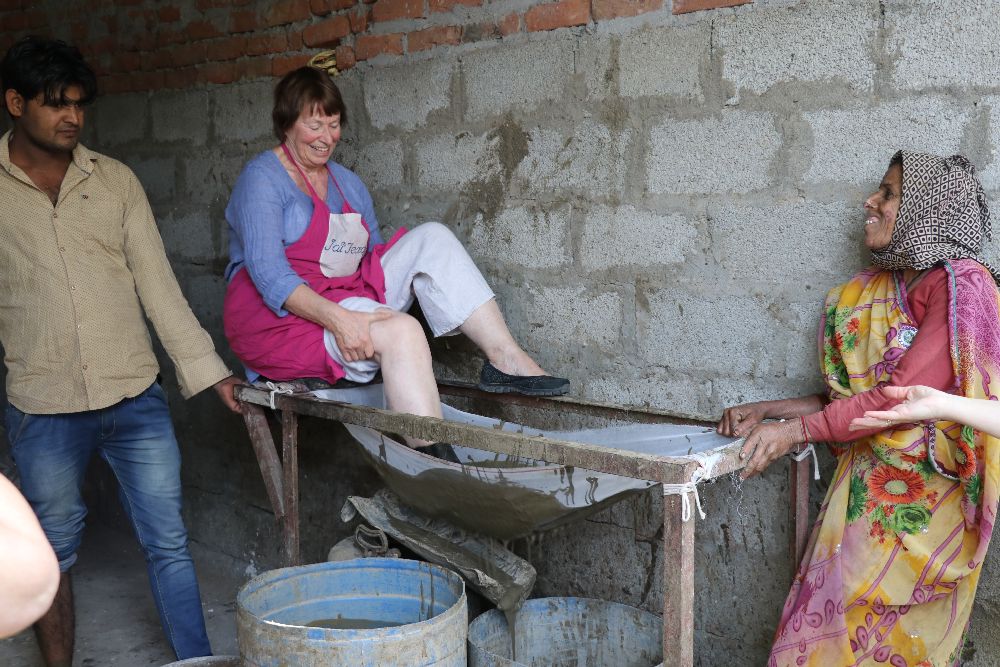
The mud resist paste is a natural substitute of wax and this traditional printing is commonly known as ‘Dabu’ or Daboo. Dabu acts as mechanical resist and prevents the penetration of dye during dyeing in areas covered with mud resist paste (Dabu).
The art of making mud resist paste is kept secret for long time and every family has its own recipe to make the paste. Dabu printing is laborious process.
- Kaligur Dabu – Made from river clay (kali mati), lime stone, insect eaten wheat flour and tree gum (gum Arabic or similar type of gum). It has the least adhesive strength. It is suitable for designs need maximum two dips.
- Dolidaar Dabu – Made from insect eaten wheat, lime and natural gum mixed with water to make a semi- thick paste. This process has better adhesive strength than the kaligar dabu and is suitable where design need more than 2 dips.
- Gawanrbali Dabu – Made from roasted gawar seed powder (Cyamopsis Tetragonoloba), lime stone, jaggery (Molasses), oil (til oil) and river clay. It has the best adhesive strength of the three if design need more than 3 dips, this method of mud paste preparation is suitable.

PROCESS NO. 3
Printing
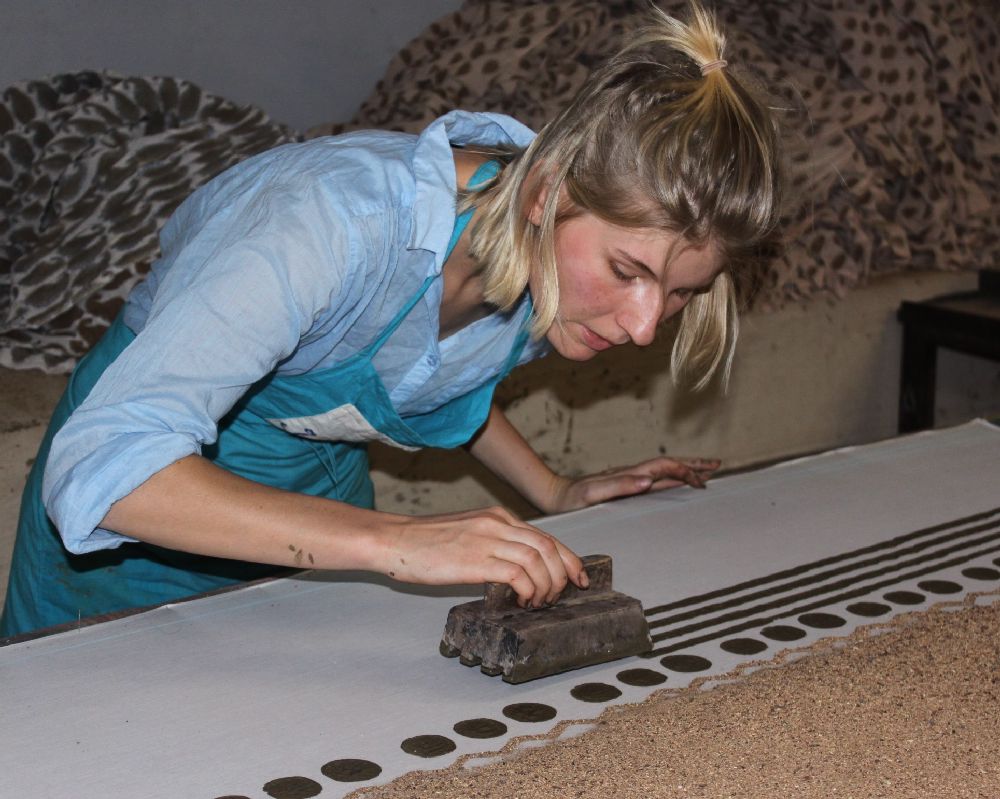
Pathiya or printing table (normally 3 to 6 mtrs. long) is used to print mud resist paste on fabric. The mud paste is taken in wooden trey (plastic trey can also be used). Earlier used handi (a wide mouthed earthen vessel). Filled with mud paste and plastic wire knitted frame made of iron or bamboo floated on the top of mud paste. While printing with block, (light wood block specially made for mud resist printing) a soft beating is required on the handle of the block. Block need to lightly dip in the mud resist paste just enough to smear the surface thinly and evenly with the paste. This act need experience. For any excess of the paste on the block would spread to the other part of the motif.
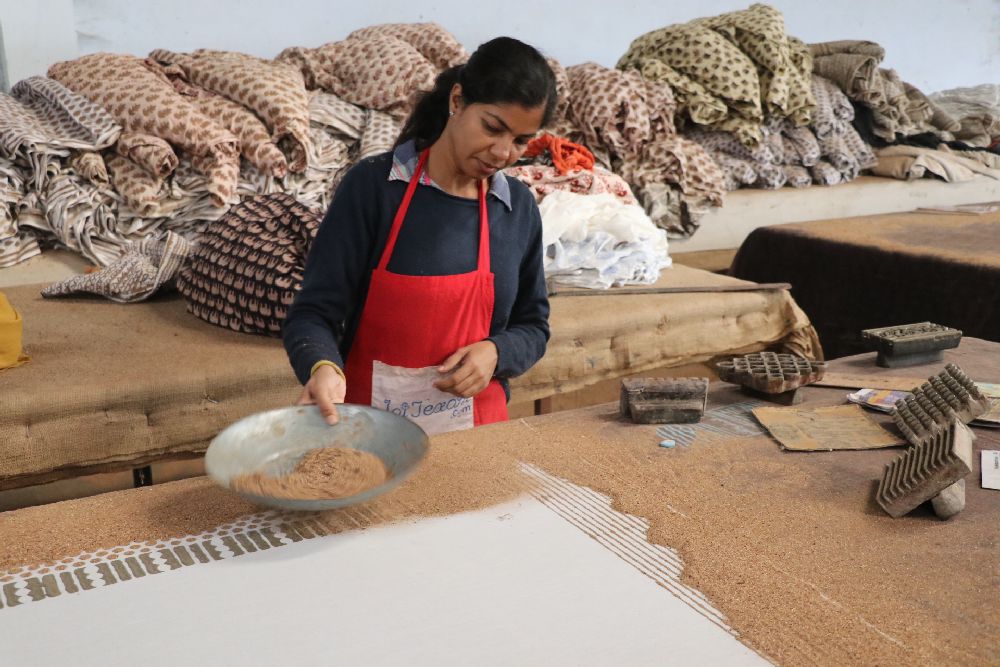
Since the resist paste is thick and sticky no sharp impression of motif are achieved. It is applied with wooden block on the fabric and saw dust (camel dung powder were used in olden days) is sprinkled over it. Saw dust has two major functions at this stage-first to absorb water from the mud resist paste and give additional layers of resist. After printing, the fabric is left outside in the sun for crispy drying before dipping in indigo vat.
Special care is required while moving the fabric from printing table to outside so that printing not get damaged.
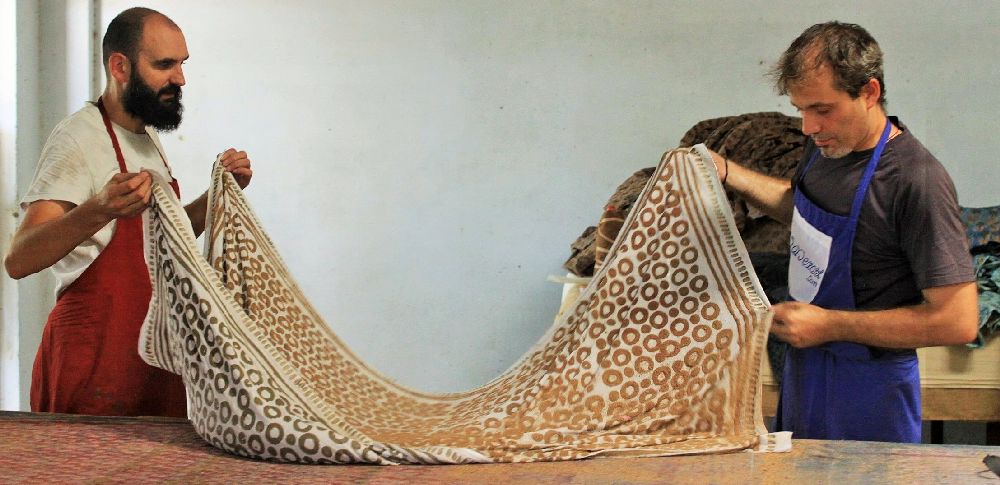
PROCESS NO. 4
Preparation of Indigo Vat
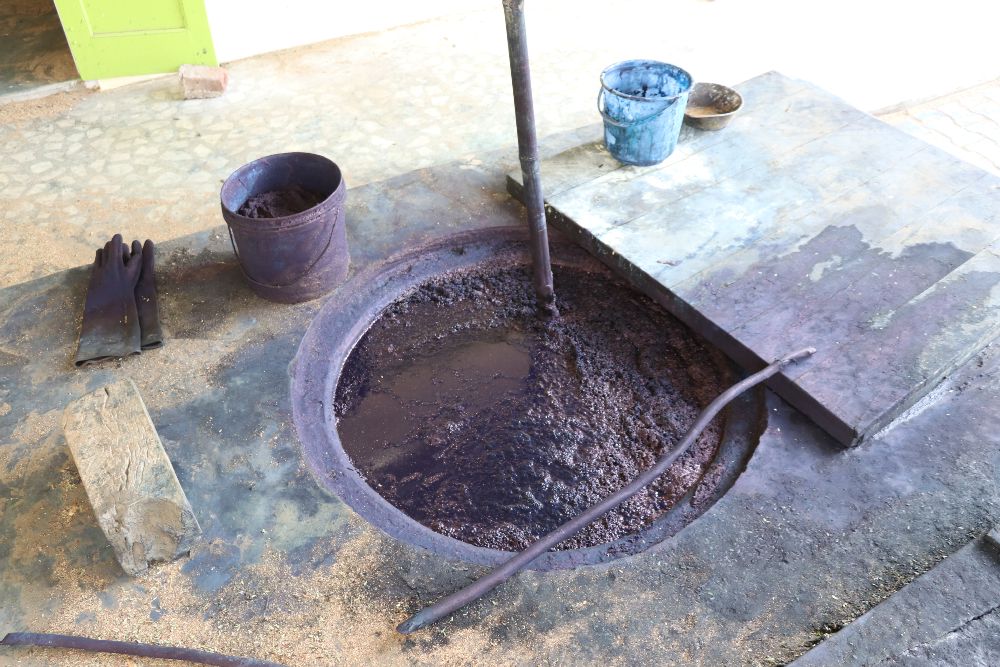
Preparation of the indigo vat (normally 15 feet deep cemented pit is used in Bagru) is tedious and lengthy process but once the vat is ready for use, it is kept ‘alive’ by constant addition of indigo, lime and jaggery (to maintain the efficiency of indigo vat one has to use every day). How and what quality of different ingredients required to add in the indigo vat is learned by experience only. Now a day’s hydro (sodium hydro sulphite) is used for quick reduction of vat dye. (Lime and jaggery can be used, but it takes longer time for reduction of indigo vat). There is no written recipe for the indigo vat and artisans has its own way of handling indigo vat.
Process of extraction of indigo from indigo leaves (Indigofera Tinctoria) is covered in other article.
PROCESS NO. 5
Dyeing with Indigo Blue
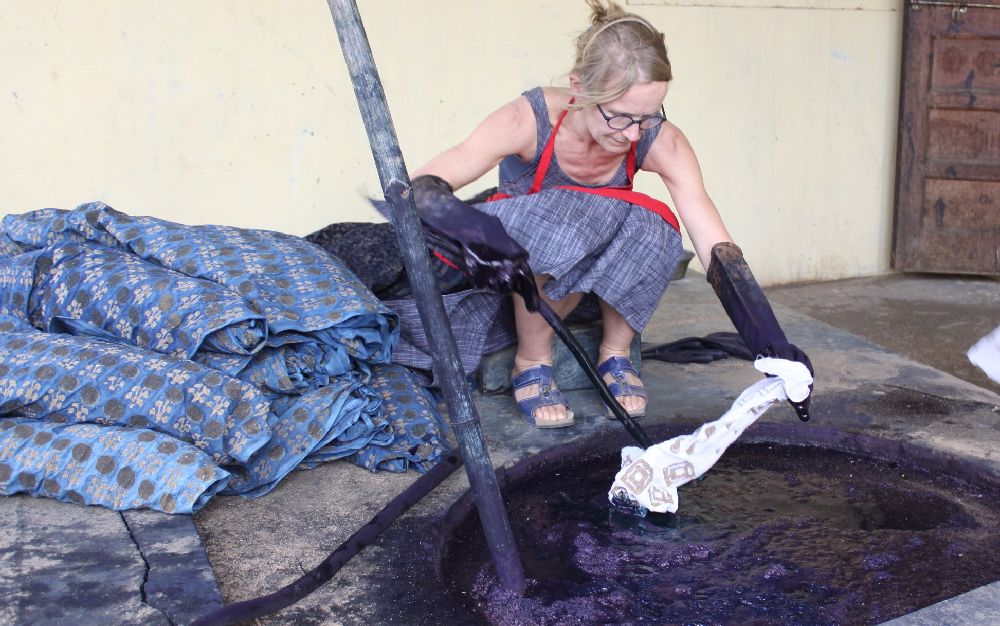
The mud printed cloth is folded with pleats and lowered gently into the indigo vat with the help of stick. Person who do indigo dyeing need good amount of experience (locally called neelgar). Otherwise one may not get indigo dye evenly. When the cloth is totally submerged in the vat, the dyer still holding it under the liquid dye, open each pleat to allow the fabric to have the indigo dye evenly. Since indigo does not react in the presence of air, any air trapped in the folds or pleats will give patchy dyeing. The fabric is then taken out of vat and opened out to react with the atmospheric oxygen for oxidation of colors.
Oxidation turn reduced indigo into oxidized indigo. Dry flat on the ground, once it is dried, for darker shades the fabric is again dipped in the vat, pulled out and oxidized. Dried flat on the ground. This process is repeated till the desired dark shade is achieved. The fabric is finally dried flat on the ground. Special Care is required so that while dyeing or drying dabu does not get broken or cracked.

PROCESS NO. 6
Washing
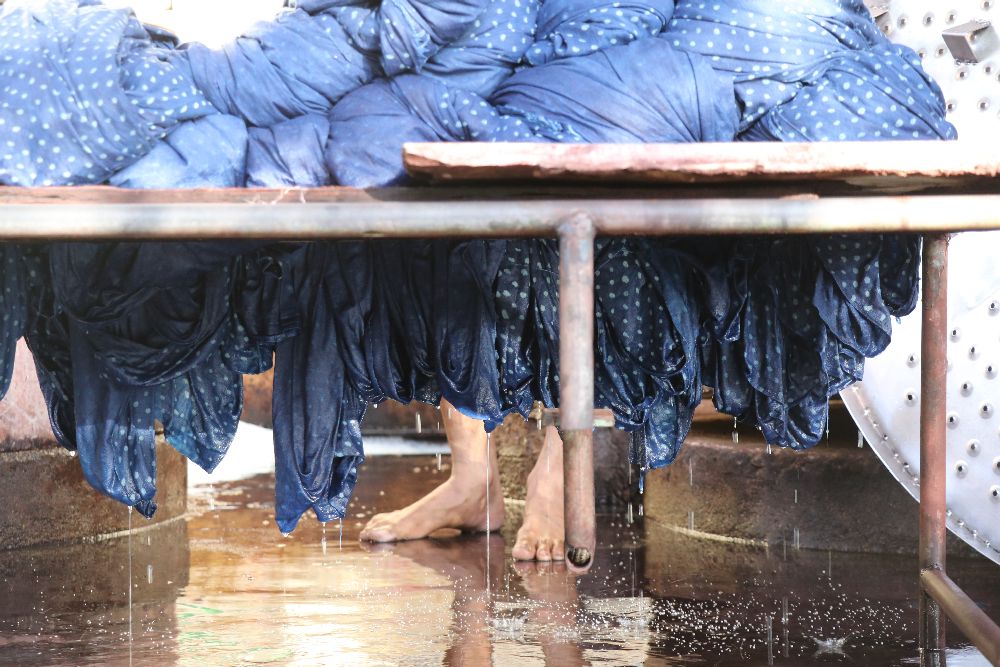
The mud resist paste and superficial dye which is physically loosely attached to fabric is removed by washing of the fabric .The dyed fabric is left in big cemented tanks for at least 3 to 4 hours till the mud resist paste becomes smooth and lose . The excess dye and paste removed by beating the fabric on large flat slab of stone. Then fabric is transferred to another water tank with fresh water .Wash the fabric by beating on the large flat slab of stone again. This process may be repeated 2-3 times .Finally dry flat on the ground. Washing with nonionic detergent before drying may give better result.
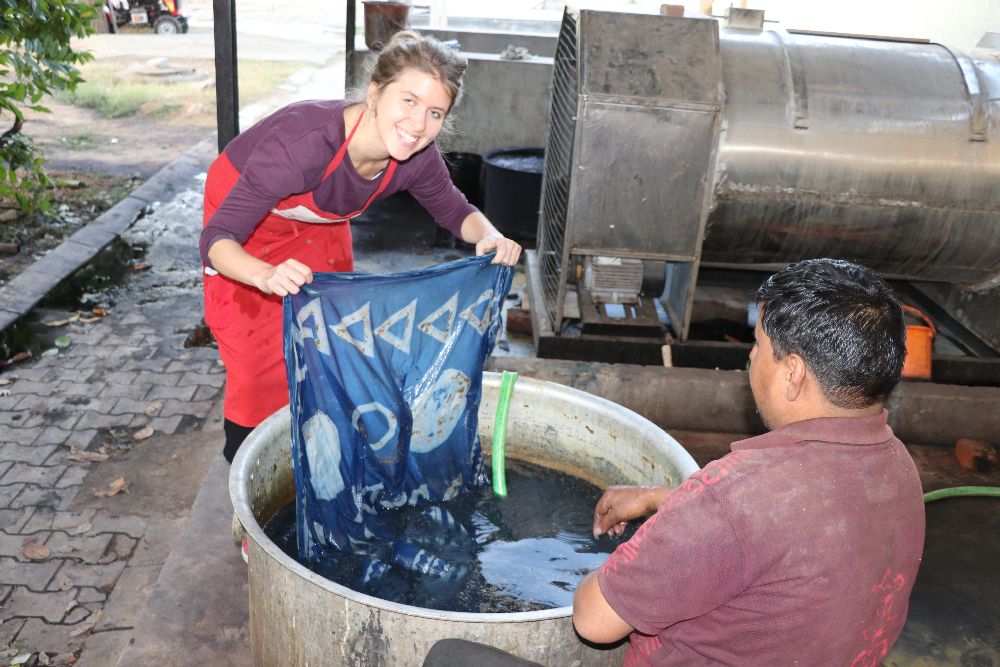
Reference
Photographed at Jai Texart Hand Block Printing Factory Bagru.
- Jaitexart’s printing process manual
- "Rangrez" by Hemant Sethia & Udit Sethia
- "Block printing and dyeing of Bagru – Rajasthan” by Bijoy Chandra Mohanty and Jagadish Prasad Mohanty.

